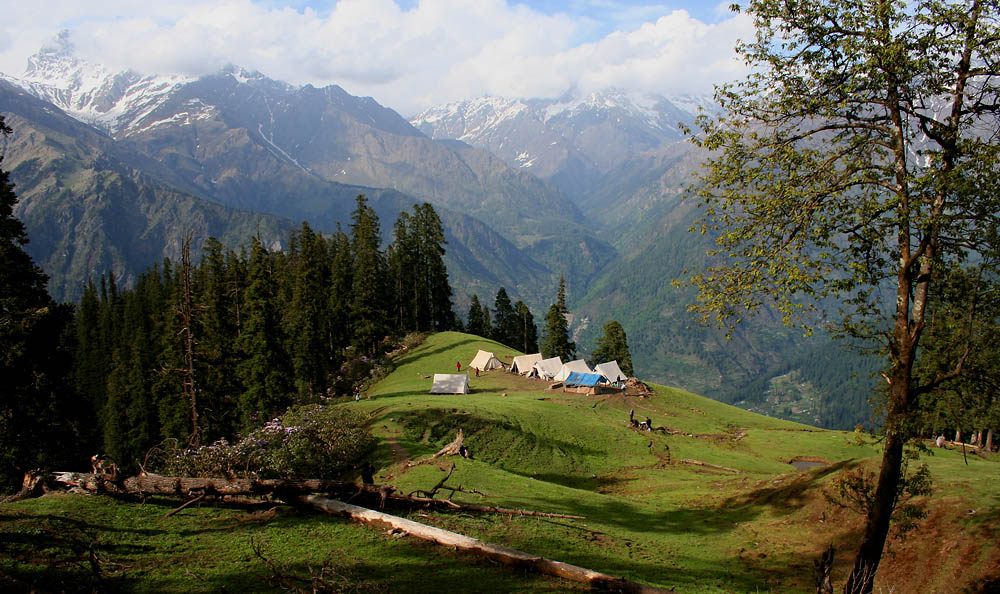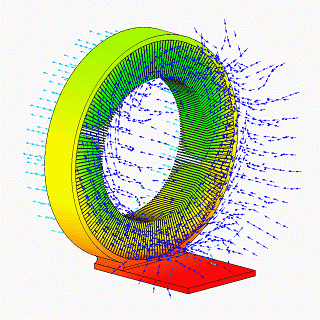|
Hand Warmer
Hand warmers are small, often disposable, packets that produce heat to warm cold hands. They are used throughout the world in a variety of ways, including outdoor recreation, manual labor, and homelessness. History The hand and foot warmer was first patented by Jonathan T. Ellis of New Jersey in 1891, though no evidence exists that it was ever produced. The first commercially produced hand warmer was created by Japanese inventor Niichi Matoba. Matoba received a patent for applying the principle of an oxidation reaction that produces heat by means of platinum catalysis. He then devoted his time to researching how to make the product suitable for practical use. In 1923, he manufactured a prototype of his device naming it HAKUKIN-kairo (HAKKIN warmer). A version of these original portable hand warmers is still produced in Japan. Types Iron oxidation Air-activated hand warmers contain cellulose, iron powder, activated carbon, vermiculite (which holds water) and salt. They prod ... [...More Info...] [...Related Items...] OR: [Wikipedia] [Google] [Baidu] |
Outdoor Recreation
Outdoor recreation or outdoor activity refers to recreation done outside, most commonly in natural settings. The activities that encompass outdoor recreation vary depending on the physical environment they are being carried out in. These activities can include fishing, hunting, backpacking (wilderness), backpacking, walking and horseback riding — and can be completed individually or collectively. Outdoor recreation is a broad concept that encompasses a varying range of activities and landscapes. Outdoor recreation is typically pursued for purposes of physical exercise, general wellbeing, and spiritual renewal. While a wide variety of outdoor recreational activities can be classified as sports, they do not all demand that a participant be an athlete. Rather, it is the collectivist idea that is at the fore in outdoor recreation, as outdoor recreation does not necessarily encompass the same degree of competitiveness or rivalry that is embodied in sporting matches or championshi ... [...More Info...] [...Related Items...] OR: [Wikipedia] [Google] [Baidu] |
Latent Heat Of Fusion
In thermodynamics, the enthalpy of fusion of a substance, also known as (latent) heat of fusion, is the change in its enthalpy resulting from providing energy, typically heat, to a specific quantity of the substance to change its state from a solid to a liquid, at constant pressure. The enthalpy of fusion is the amount of energy required to convert one mole of solid into liquid. For example, when melting 1 kg of ice (at 0 °C under a wide range of pressures), 333.55 kJ of energy is absorbed with no temperature change. The heat of solidification (when a substance changes from liquid to solid) is equal and opposite. This energy includes the contribution required to make room for any associated change in volume by displacing its environment against ambient pressure. The temperature at which the phase transition occurs is the melting point or the freezing point, according to context. By convention, the pressure is assumed to be unless otherwise specified. Overview Th ... [...More Info...] [...Related Items...] OR: [Wikipedia] [Google] [Baidu] |
Carbon Oxides
In chemistry, an oxocarbon or oxide of carbon is a chemical compound consisting only of carbon and oxygen. The simplest and most common oxocarbons are carbon monoxide (CO) and carbon dioxide (). Many other stable (practically if not thermodynamically) or metastable oxides of carbon are known, but they are rarely encountered, such as carbon suboxide ( or ) and mellitic anhydride (). Many other oxides are known today, most of them synthesized since the 1960s. Some of these new oxides are stable at room temperature. Some are metastable or stable only at very low temperatures, but decompose to simpler oxocarbons when warmed. Many are inherently unstable and can be observed only momentarily as intermediates in chemical reactions or are so reactive that they exist only in gas phase or have only been detected by matrix isolation. Graphene oxide and other stable polymeric carbon oxides with unbounded molecular structures exist. Overview Carbon dioxide (CO2) occurs widely in nature, an ... [...More Info...] [...Related Items...] OR: [Wikipedia] [Google] [Baidu] |
Redox
Redox ( , , reduction–oxidation or oxidation–reduction) is a type of chemical reaction in which the oxidation states of the reactants change. Oxidation is the loss of electrons or an increase in the oxidation state, while reduction is the gain of electrons or a decrease in the oxidation state. The oxidation and reduction processes occur simultaneously in the chemical reaction. There are two classes of redox reactions: * Electron transfer, Electron-transfer – Only one (usually) electron flows from the atom, ion, or molecule being oxidized to the atom, ion, or molecule that is reduced. This type of redox reaction is often discussed in terms of redox couples and electrode potentials. * Atom transfer – An atom transfers from one Substrate (chemistry), substrate to another. For example, in the rusting of iron, the oxidation state of iron atoms increases as the iron converts to an oxide, and simultaneously, the oxidation state of oxygen decreases as it accepts electrons r ... [...More Info...] [...Related Items...] OR: [Wikipedia] [Google] [Baidu] |
Smolder
Smouldering (British English) or smoldering (American English; see spelling differences) is the slow, flameless form of combustion, sustained by the heat evolved when oxygen directly attacks the surface of a condensed-phase fuel. Many solid materials can sustain a smouldering reaction, including coal, cellulose, wood, cotton, tobacco, cannabis, peat, plant litter, humus, synthetic foams, charring polymers including polyurethane foam and some types of dust. Common examples of smouldering phenomena are the initiation of residential fires on upholstered furniture by weak heat sources (e.g., a cigarette, a short-circuited wire), and the persistent combustion of biomass behind the flaming front of wildfires. Fundamentals The fundamental difference between smouldering and flaming combustion is that smouldering occurs on the surface of the solid rather than in the gas phase. Smouldering is a surface phenomenon but can propagate to the interior of a porous fuel if it is permeable to ... [...More Info...] [...Related Items...] OR: [Wikipedia] [Google] [Baidu] |
Carbon
Carbon () is a chemical element; it has chemical symbol, symbol C and atomic number 6. It is nonmetallic and tetravalence, tetravalent—meaning that its atoms are able to form up to four covalent bonds due to its valence shell exhibiting 4 electrons. It belongs to group 14 of the periodic table. Carbon makes up about 0.025 percent of Earth's crust. Three Isotopes of carbon, isotopes occur naturally, carbon-12, C and carbon-13, C being stable, while carbon-14, C is a radionuclide, decaying with a half-life of 5,700 years. Carbon is one of the timeline of chemical element discoveries#Pre-modern and early modern discoveries, few elements known since antiquity. Carbon is the 15th abundance of elements in Earth's crust, most abundant element in the Earth's crust, and the abundance of the chemical elements, fourth most abundant element in the universe by mass after hydrogen, helium, and oxygen. Carbon's abundance, its unique diversity of organic compounds, and its unusual abi ... [...More Info...] [...Related Items...] OR: [Wikipedia] [Google] [Baidu] |
Felt
Felt is a textile that is produced by matting, condensing, and pressing fibers together. Felt can be made of natural fibers such as wool or animal fur, or from synthetic fibers such as petroleum-based acrylic fiber, acrylic or acrylonitrile or wood pulp–based rayon. Blended fibers are also common. Natural fiber felt has special properties that allow it to be used for a wide variety of purposes. It is "fire-retardant and self-extinguishing; it dampens vibration and absorbs sound; and it can hold large amounts of fluid without feeling wet..." History Felt from wool is one of the oldest known textiles. Many cultures have legends about the origins of felt-making. Sumerian legend claims that the secret of feltmaking was discovered by Urnamman of Lagash. The story of Clement of Metz, Saint Clement and Saint Christopher relates that the men packed their sandals with wool to prevent blisters while fleeing from persecution. At the end of their journey the movement and sweat had turned ... [...More Info...] [...Related Items...] OR: [Wikipedia] [Google] [Baidu] |
Heat Spreader
A heat spreader transfers energy as heat from a hotter source to a colder heat sink or heat exchanger. There are two thermodynamic types, passive and active. The most common sort of passive heat spreader is a plate or block of material having high thermal conductivity, such as copper, aluminum, or diamond. An active heat spreader speeds up heat transfer with expenditure of energy as work supplied by an external source. A heat pipe uses fluids inside a sealed case. The fluids circulate either passively, by spontaneous convection, triggered when a threshold temperature difference occurs; or actively, because of an impeller driven by an external source of work. Without sealed circulation, energy can be carried by transfer of fluid matter, for example externally supplied colder air, driven by an external source of work, from a hotter body to another external body, though this is not exactly heat transfer as defined in physics. Exemplifying increase of entropy according to the se ... [...More Info...] [...Related Items...] OR: [Wikipedia] [Google] [Baidu] |
Exothermic Reaction
In thermochemistry, an exothermic reaction is a "reaction for which the overall standard enthalpy change Δ''H''⚬ is negative." Exothermic reactions usually release heat. The term is often confused with exergonic reaction, which IUPAC defines as "... a reaction for which the overall standard Gibbs energy change Δ''G''⚬ is negative." A strongly exothermic reaction will usually also be exergonic because Δ''H''⚬ makes a major contribution to Δ''G''⚬. Most of the spectacular chemical reactions that are demonstrated in classrooms are exothermic and exergonic. The opposite is an endothermic reaction, which usually takes up heat and is driven by an entropy increase in the system. Examples Examples are numerous: combustion, the thermite reaction, combining strong acids and bases, polymerizations. As an example in everyday life, hand warmers make use of the oxidation of iron to achieve an exothermic reaction: :4Fe + 3O2 → 2Fe2O3 ... [...More Info...] [...Related Items...] OR: [Wikipedia] [Google] [Baidu] |
Charcoal
Charcoal is a lightweight black carbon residue produced by strongly heating wood (or other animal and plant materials) in minimal oxygen to remove all water and volatile constituents. In the traditional version of this pyrolysis process, called charcoal burning, often by forming a charcoal kiln, the heat is supplied by burning part of the starting material itself, with a limited supply of oxygen. The material can also be heated in a closed retort. Modern charcoal briquettes used for outdoor cooking may contain many other additives, e.g. coal. The early history of wood charcoal production spans ancient times, rooted in the abundance of wood in various regions. The process typically involves stacking wood billets to form a conical pile, allowing air to enter through openings at the bottom, and igniting the pile gradually. Charcoal burners, skilled professionals tasked with managing the delicate operation, often lived in isolation to tend their wood piles . Throughout histo ... [...More Info...] [...Related Items...] OR: [Wikipedia] [Google] [Baidu] |







